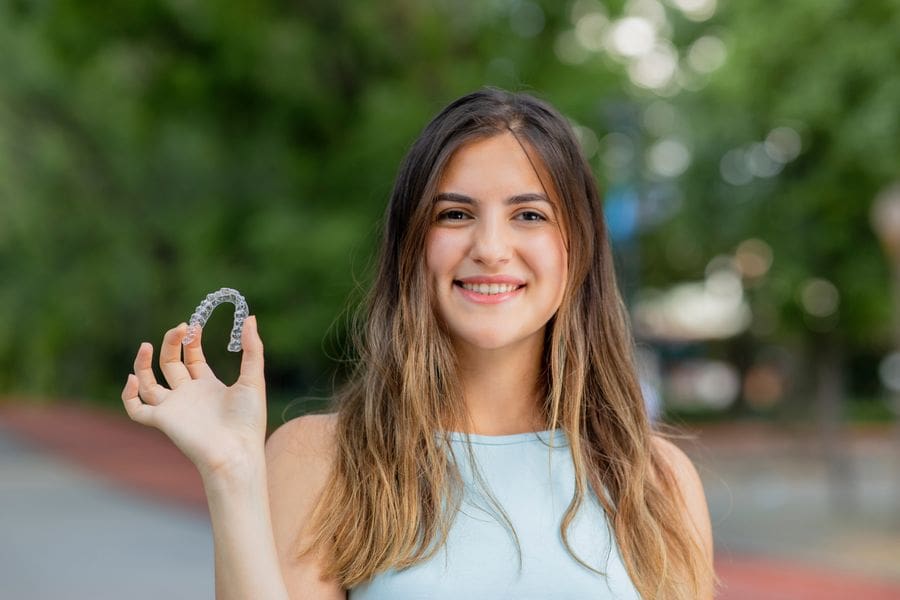Did you have braces as a kid or teen? Many of us did. But these days, orthodontists are forgoing the once-common wired technique to straighten teeth for the far more discreet option of removable liners such as Invisalign. Let’s discuss!
What Is Invisalign?
Invisalign is the brand name for an orthodontic teeth-straightening technique using clear aligners. Invented by Stanford University students Zia Chishti and Kelsey Worth in 1997, it was the world’s first completely clear aligner system. Align Tech (the company behind the Invisalign brand) uses proprietary virtual modeling software, rapid manufacturing approaches, and mass customization to make aligners for patients with a patented aligner material called SmartTrack.
Align Tech also uses SmartStaging technology to program each tooth movement in a specific sequence to achieve the desired outcome. Additionally, it utilizes what it calls SmartForce features, attachments that provide the exact forces needed to complete predictable tooth movements. Invisalign is also the only company in the world that uses bite ramps, precision cuts, and power ridges to manage various situations.
Ideal Invisalign Candidates
Invisalign candidates can range from children as young as 6 to adults. An orthodontist will assess your teeth and determine if you are a good candidate. The Invisalign website also offers a self-assessment questionnaire and specifies the following as treatable cases:
- Overbite
- Cross-bite
- Gap Teeth
- Open Bite
- Crowded Teeth
- Straightening Teeth
- Baby and Permanent Teeth
How It Works
Once it’s determined that you are a good candidate for Invisalign, your orthodontist will create a 3-D image of your mouth and jaw. Using this image, they can construct a correction plan via customized plastic aligner trays that pressure your teeth to slowly shift into the preferred place in your mouth. Based on your orthodontist’s plan, they will instruct you when to switch to the next set of aligners, usually between one and two weeks.
Each tray serves in the process of your teeth becoming straighter. Aligners should be taken out when you eat or brush your teeth but should otherwise stay on. If the trays are not worn as prescribed, progress will be limited.
Once you have completed treatment, you will wear a retainer so that your jaw bones solidify around the new teeth placement and help prevent your teeth from shifting back to their natural resting place.
Have you tried Invisalign? Share your experience with us in the comments below!






